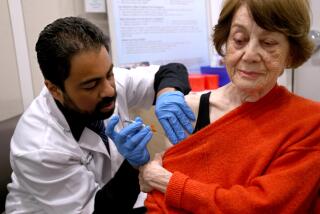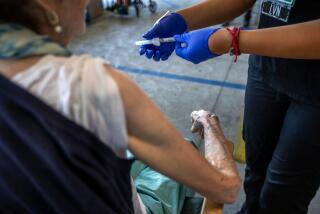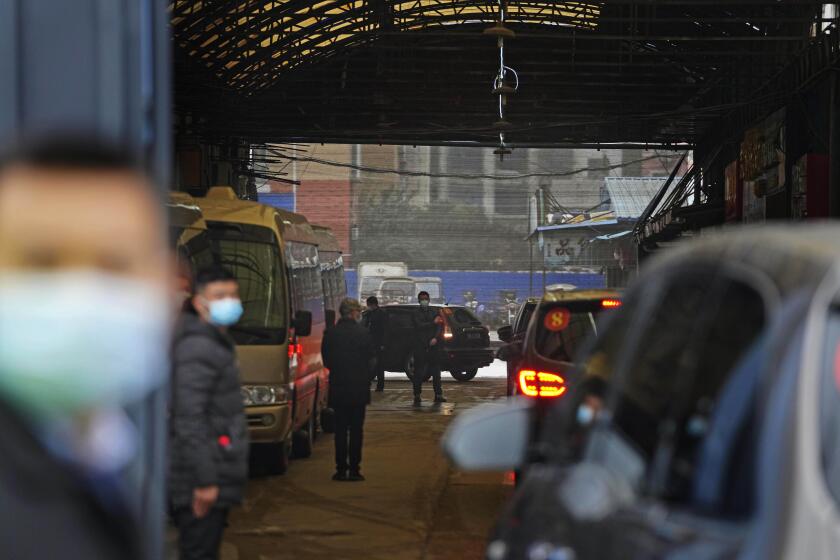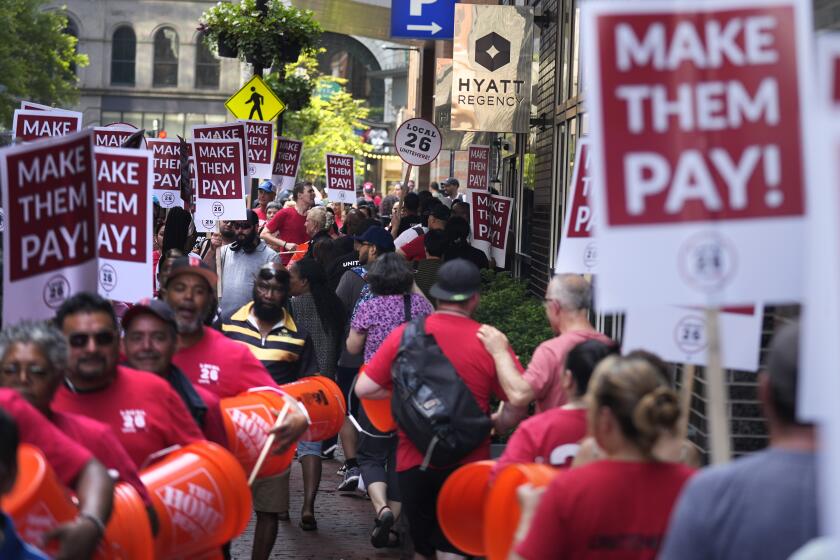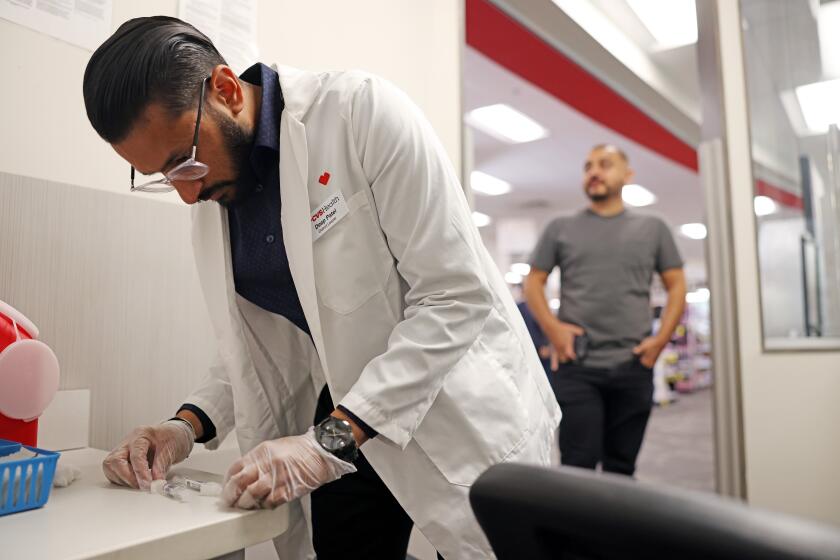Here we go again: California coronavirus cases rising. Is a new wave coming soon?
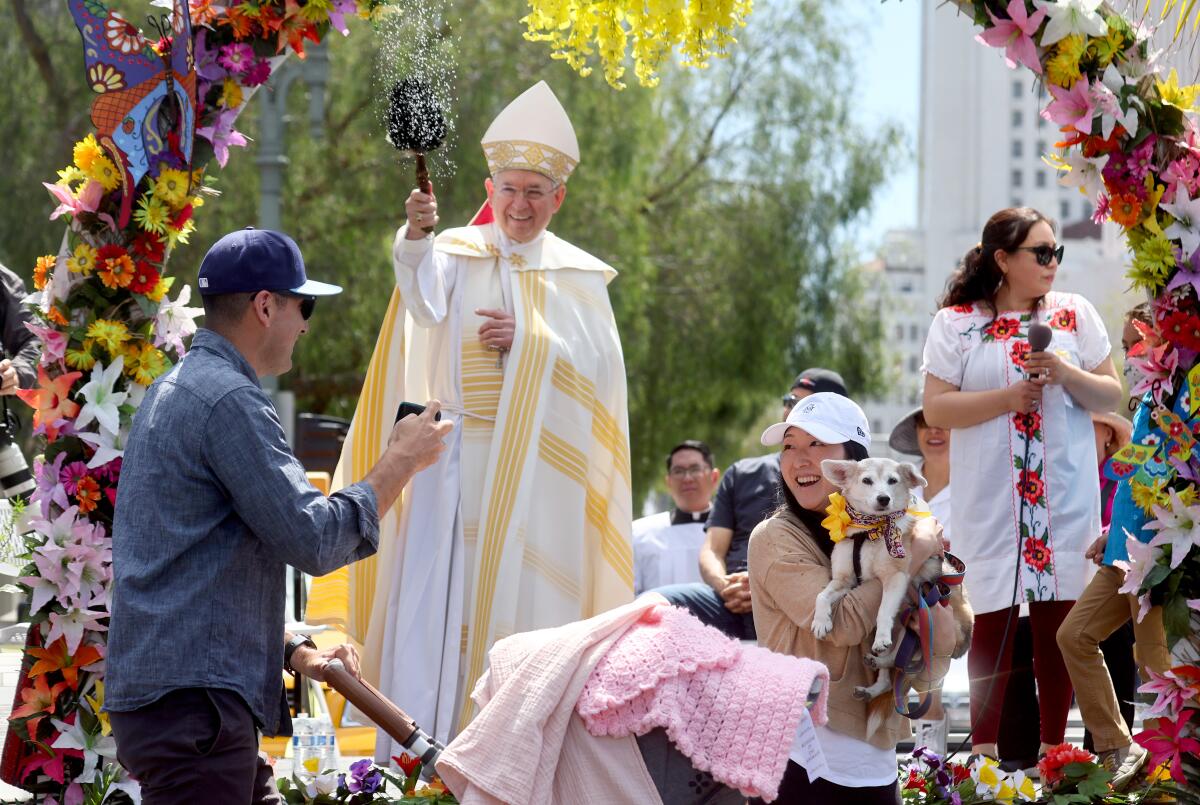
After months of declining numbers, California has recorded a nearly 30% increase in coronavirus cases over the last week along with smaller rises in hospitalizations, causing some health officials to suspect that the state is headed into a new pandemic wave.
The increase coincides with a loosening of COVID-19 restrictions such as mask mandates and vaccine verification rules as well as the rise of new subvariants of the highly transmissible Omicron strain. The question now is how much higher cases will go and whether new government intervention will be needed.
“We’re expecting a small surge that may mirror something that we saw in Delta last summer, in early July, but it’s happening now, in May,” Dr. Curtis Chan, deputy health officer for San Mateo County, said in an interview.
Chan expects a rise in both hospitalizations and deaths but doesn’t believe a new surge would be as bad as last winter’s Omicron wave.
“The virus is definitely flowing,” Dr. Matt Willis, Marin County’s health officer, said in an interview. “People need to know the likelihood of an exposure in the community is increasing.”
California has been recording about 5,600 coronavirus cases a day over the last week, its highest case rate since early March. California’s latest per capita case rate — 100 cases a week for every 100,000 residents — is just enough to meet the threshold for a high rate of coronavirus transmission, data analyzed by The Times show.
The latest maps and charts on the spread of COVID-19 in Los Angeles County, including cases, deaths, closures and restrictions.
Coronavirus-positive hospitalizations have risen 7% in the last week, ticking up to 1,037 statewide as of Saturday. Of them, 146 were in intensive care units, a figure that’s up 13% over the same time period.
The number of hospitalizations is still among the lowest levels of the pandemic. But the state’s COVID Assessment Tool ensemble forecast suggests hospitalizations will go up by an additional 65% by Memorial Day and that the number of COVID-19 patients needing intensive care will double by then.
On Sunday, the state estimated that the effective coronavirus transmission rate was 1.24. This means each infected Californian is typically transmitting the virus to more than one person, which may indicate the virus’ spread is increasing.
San Mateo County has California’s highest coronavirus case rate — with 222 cases a week for every 100,000 residents. San Francisco is second, with a rate of 220. L.A. County’s rate is 127.
There’s some speculation that case rates are relatively higher in the Bay Area in part because of a high rate of testing. Still, the data are concerning enough that San Mateo County is warning nursing homes, jails, shelters and similar settings about the need to take additional precautions, Chan said.
“We’re certainly seeing it amongst people presenting in urgent care [centers and] emergency rooms,” Chan said. “We’re seeing it in the sewage as well too. So it’s real.”
Just 2½ weeks ago, every California county had a low COVID-19 Community Level as defined by the Centers for Disease Control and Prevention — colored green on the agency’s maps, reflecting a tier system tied to a combination of case and hospitalization levels. But on Thursday, the CDC designated three counties as having a medium COVID-19 Community Level, placing San Mateo, Santa Cruz and Marin counties in the yellow tier.
The CDC suggests people at high risk for severe disease in those counties consider wearing a mask in indoor public settings. The CDC also suggests that companies, schools and other institutions in those counties consider enacting screening testing for people exposed to the virus at worksites, schools or other settings.
“There are institutional things that each leader of a particular agency or program can do to make their community safer,” Chan said. “This is now that time to activate those responses.”
Since mid-February, when a statewide universal indoor mask mandate was lifted, the state Department of Public Health has issued more stringent advice than the CDC for Californians, strongly recommending universal mask wearing in indoor public settings.
Signs of increasing transmission have emerged statewide. Coronavirus cases in Los Angeles County are up by 40% over the previous week, a trend Public Health Director Barbara Ferrer has not characterized as a new surge, but still referred to as “pretty significant.” In L.A. County, coronavirus levels in wastewater systems have nearly doubled over the last two weeks, and clusters of coronavirus cases — while still at low levels — are climbing at nursing homes, workplaces and schools.
The increase in coronavirus cases is “pretty significant,” a top official said, underscoring the importance of vaccinations, booster shots and masks.
Ferrer said she was hopeful the increase in cases stabilizes fairly soon and that stress on the hospital system will be minimized because of vaccinations and increasing availability of anti-COVID drugs.
Still, no one can guarantee that a universal mandatory mask policy will never return if pandemic trends in hospitals deteriorate dramatically.
Ferrer has said L.A. County is prepared to reinstitute a universal mask order in indoor public settings should conditions worsen so much that the CDC designates L.A. County as having a high COVID-19 Community Level, which means the CDC once again recommends the practice.
One way to get there is for case rates in L.A. County to increase by an additional 60% and the rate of new weekly coronavirus-positive hospital admissions to quintuple.
“Let’s continue to be prepared to take appropriate measures depending on what we’re learning and seeing,” Ferrer said.

Coronavirus cases have risen by nearly 30% in California over the last week. Hospitalizations are up too.
Compared with the prior week, coronavirus cases are up by 26% in San Diego County, 35% in Orange and Ventura counties, and 39% in Riverside County. They’re up by 23% in Greater Sacramento, and have risen by 40% in the Bay Area and the San Joaquin Valley.
Over the prior week, coronavirus-positive hospitalizations are up 4% in L.A. County, 26% in Orange County and 12% in the Bay Area.
High school proms have become a focal point for superspreader events. About 90 San Mateo High School students tested positive for the coronavirus after attending prom at the Asian Art Museum in San Francisco on April 9. And after attending their prom at San Francisco City Hall on April 16, more than 50 students from Redwood High School in Marin County tested positive for the virus.
In addition, a number of middle school students from Marin County tested positive for the virus after returning from a spring break trip to the nation’s capital.
Local health officials in California aren’t making any moves to cancel gatherings such as proms and graduations.
But they are suggesting it’s time to be more cautious, given the rapid spread of two Omicron subvariants, BA.2 and its even-more-infectious successor, BA.2.12.1.
Marin County health officials recently warned that attending gatherings of 50 or more people — especially when unmasked and indoors — increases risk of coronavirus exposure. In a memo to school officials, Marin County health officials suggested that schools hosting large indoor gatherings consider requiring attendees to show proof of a negative rapid test result and proof of vaccination, and requiring masks indoors.
But it’ll be up to schools — not health officials — to decide how to manage proms and graduations, Willis said. And more layers of protection are better than fewer; even if a school decides not to require masks at a prom, the event could be made safer if schools chose to require proof a recent negative test or improved ventilation by opening doors and windows or holding the event outdoors.
If a graduation is held indoors, a step that would create additional safety — short of requiring masking at all times — is asking students to wear their masks while sitting and listening to speakers but allowing them to be removed when they walk across the stage, Chan said.
Even just opening the windows and turning on an air-conditioning system can “substantially decrease the amount of virus in the air well over 50%,” Chan said. “I walk into rooms all the time where people don’t have the windows open and they don’t have the doors open.”
Although some people have tired of taking measures to guard against a coronavirus infection, health experts emphasize it’s still prudent to take precautions. Those who are unvaccinated are at higher risk of severe illness and death, and even for those who are vaccinated, there is still some risk of infection leading to long COVID, in which illness can persist for years, as well as higher risk of heart disease and diabetes.
To reduce risk, L.A. County recently imposed a continued mask mandate at its airports and on its public transit systems. The San Francisco Bay Area Rapid Transit system imposed a similar requirement for its commuter rail network.
Chan said we’re now entering a new phase of the pandemic, in which “we’re going to have these swells, some small waves and some larger surges that’s going to affect California. And understanding the intensity of each surge and wave … is something that we’re all going to need to be wrestling with.”
Chan equated it to reading a weather report, like trying to understand wildfire risk from forecasts about Santa Ana winds and a heat wave. Currently, the East Coast is seeing increasing hospitalizations but not an explosive surge. If it were, California would probably be on a high level of alert.
More to Read
Sign up for Essential California
The most important California stories and recommendations in your inbox every morning.
You may occasionally receive promotional content from the Los Angeles Times.


